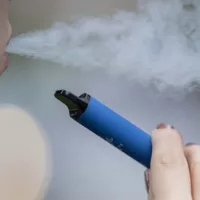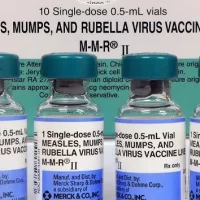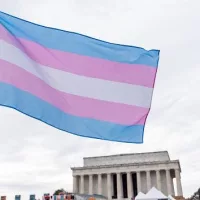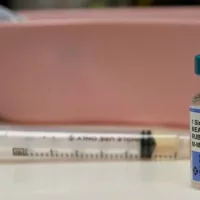
(WASHINGTON) — With e-cigarettes and flavored vapes booming in popularity, the Supreme Court on Monday will examine whether the Food and Drug Administration unlawfully blocked the marketing and sale of more than a million new sweet and candy-flavored nicotine products in recent years.
The case comes as kid-friendly flavors, such as fruit, candy, mint, menthol and desserts, which are not approved by the FDA and are on the market illegally, have been fueling an explosion in retail sales of e-cigarettes.
While vaping among youth is declining, more than 1.6 million children use the products, according to the Centers for Disease Control and Prevention. Nearly 90% of them consume illicit flavored brands.
Two manufacturers of flavored nicotine-laced e-liquids such as “Jimmy the Juice Man Peachy Strawberry” and “Iced Pineapple Express” sued the FDA after their product applications were rejected, alleging regulators imposed unclear and unreasonable requirements to win approval.
Triton Distribution and Vapetasia acknowledged that their products may appeal to youth but insisted that a “growing body of scientific evidence” shows that “flavors are crucial to getting adult smokers to make the switch and stay away from combustible cigarettes.”
A federal appeals court sided with the companies last year, saying the agency had acted arbitrarily. If the Supreme Court upholds that ruling, it could clear the way for broader marketing and sale of flavored nicotine products.
Since 2009, when Congress passed legislation aimed at curbing tobacco use among young people, the government has almost universally denied tobacco company requests to sell flavored nicotine e-liquids, citing risks of addiction among minors.
Under federal law, companies must provide the FDA with reliable and robust evidence to show that the products would promote public health and that, on balance, the benefits to adult smokers would outweigh the risks of youth addiction.
The FDA has said the two companies in this case provided insufficient evidence that the benefits of their flavored e-products in helping tobacco smokers quit exceed the dangers of hooking children.
“If you ask adults who smoke if they were to switch to e-cigarettes what kind of flavors are they interested in, the majority of responses are tobacco flavor. If you ask kids, they like the fruit or candy flavor,” said Caroline Cecot, an administrative law expert at George Washington University Law School. “This was a big part of what the FDA was sort of thinking about. And we have this evidence.”
Nearly a quarter of high school students who use e-cigarettes consume illicit menthol-flavored varieties, according to the 2023 National Youth Tobacco Survey.
Josie Shapiro, the 2024 national youth ambassador for the Campaign for Tobacco-Free Kids who testified before Congress on the dangers of nicotine addiction, said illicit flavored vapes hooked her at age 14.
“I think that by marketing any sort of flavored product as bubble gum or any of the genres of candy, it’s going to catch the eyes of children,” Shapiro said. “I’m still addicted, and I’m still trying to fight my addiction. Honestly, the FDA needs to regulate all flavored tobaccos to flavor ‘tobacco’ products and get them off the market.”
Public health experts have credited the FDA’s restrictions on flavored nicotine products with helping to drive down the number of teenagers who vape gradually from an “epidemic” level just five years ago.
The case, Food and Drug Administration v. Wages and White Lion Investments, LLC, will be decided before the end of the Supreme Court’s term in June 2025.
ABC News’ Patty See contributed to this report.
Copyright © 2024, ABC Audio. All rights reserved.















